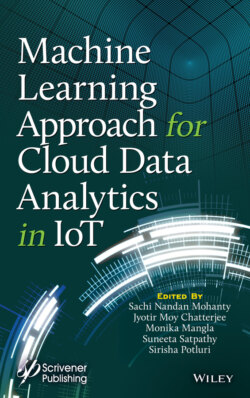Читать книгу Machine Learning Approach for Cloud Data Analytics in IoT - Группа авторов - Страница 86
3.3.1 ML for Predictive Data Analytics
ОглавлениеAs mentioned earlier, ML has been accepted as an efficient and effective choice for predictive data analytics in the retail industry. ML algorithms aid in identification of valued customers for a retail industry. These valued customers need to be retained by devising exciting and attractive strategies for success of any business entity. ML also enjoys the facility of customizing personalized customer’s view based on his likings and history [22]. Ability to provide user-oriented customer view further escalates its popularity in the retail industry. Similarly, it can also be utilized for predicting required stock so as to minimize involved risks and uncertainties [23]. The basic model of ML for predictive data analytics in the retail industry performs several functions. A sample description for same is as follows:
1 It initially gathers the data from diverse sources related to products for training purposes.
2 Thereafter, an algorithm is chosen to analyze the features of training data. Algorithms also precisely predict the product price.
3 It is followed by prediction of the right price in comparison to real price of the product.
4 ML algorithm continuously adjusts the prediction mechanism in order to minimize the gap between predicted price and actual price.
5 This pre-training is followed by prediction of price of numerous products and a feedback loop is also considered to further enhance the accuracy of the model.
6 To further refine the model, new product data is added to the system.
The abovementioned steps are the basic steps to employ predictive data analytics in the retail industry. Few such examples of its applications are as follows [16]:
ML for Demand Prediction: ML uses high computations power to handle highly volatile data to predict the demand in future. For the same prediction, ML uses external and internal sources (structured, semi-structured, and unstructured data) of information so as to make informed decisions. This data may involve historical data, social media data, etc. Here, ML applies complicated mathematical algorithms to uncover hidden patterns in complicated and large datasets and thus provide reliable and accurate forecasts [24].
ML for Predictive Sales Analytics: Another common application of predictive data analytics is to understand the driving motive behind customer’s purchase and their behavior under particular circumstances. Similarly, data from different sources is aggregated. The aggregated data is cleansed to determine the best forecasting algorithm for the current scenario. It then builds a predictive model to identify relationships among various factors. This is followed by monitoring the model to measure its accuracy with an objective to maximize its prediction accuracy.
ML for Customer’s Customization: Using ML, recommendation engines are developed which give a customized view to each individual customer based on his likes and requirements. Provision of customized view ensures retention of customers to the same platform. Amazon has got the best recommendation engine which has significantly helped it to ace the competition.
ML for Supply Chain Planning: As ML can be employed for predicting the future sales, it can also be utilized for maintaining hassle-free supply chain management despite involvement of several uncertain features. Moreover, it can also be used for optimized route planning for delivery of goods or warehouse maintenance. A route suggested by ML algorithms ensures to efficiently optimize cost, time, and carbon emission in comparison to humans.
ML for price Optimization: ML algorithms can be employed for predicting the optimized price of products considering several factors like amount of discount, product type, competing retailers, and time dimension. Usage of ML in price optimization yields accurate predictions over traditional methods of price optimization. It can also be used for revenue forecasting during a particular month, quarter, or financial year [25].
